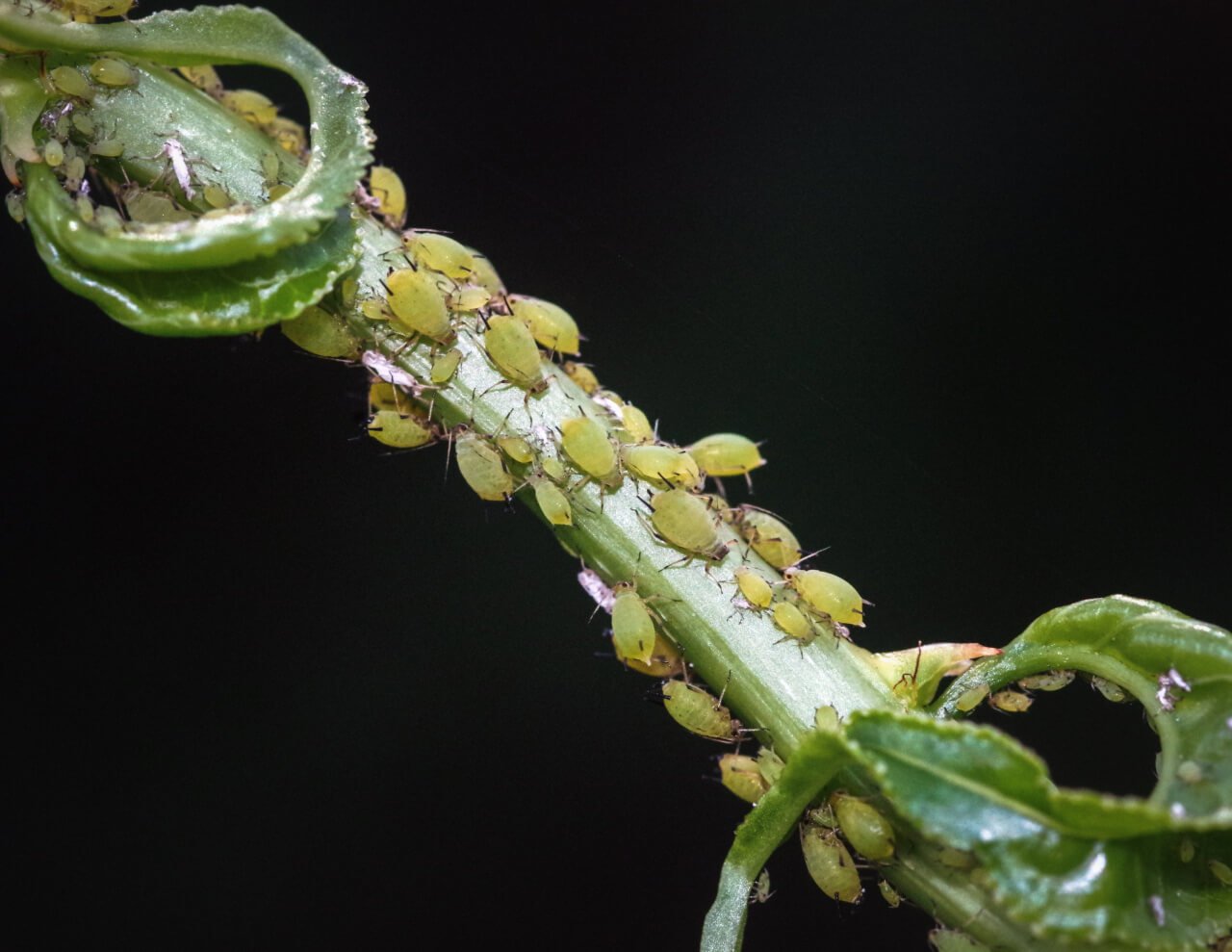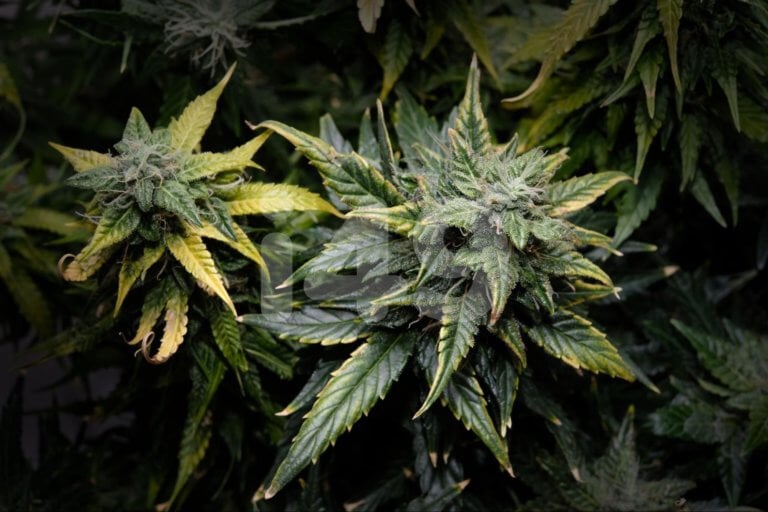If you’re growing marijuana, you may face challenges from time to time. The rewards you reap by overcoming these hurdles always outweigh the efforts. Knowing how to control and avoid problems like aphids on cannabis makes the process easier.
Pests are among the most common and irritating issues cannabis cultivators might deal with. Invasive insects like aphids can occasionally annoy some growers.
Are you interested in growing or already cultivating? Learning about pest control is crucial to a healthy harvest. Join us as we cover how to identify, kill, and prevent the problem of aphids on marijuana plants.
Let’s dig in!
What are aphids, and what do they look like?
Aphids are minute insects capable of causing massive problems for marijuana growers. Much like weed thrips, these bugs attack indoor and outdoor plants. While they can quickly infest grow areas inside, they’re usually more prevalent on outside crops.

If you discover aphids in a grow room or outside, your harvest might be in danger. The bugs feed on plants’ fluids, drying them out. These insects can also carry diseases that spread among the crop, causing further damage.

When it’s young, an individual aphid on weed is almost invisible to the naked eye. The bugs are only easy to see because they gather in large clusters as a colony.

Aphids lay eggs, and when the insects hatch, they’re usually pale or white. As nymphs, their form is already similar to an adult. They have long antennae and pincers and immediately start feeding on your plants.

As aphids on marijuana plants mature, they’re still minuscule and mainly visible when grouping together. Their color changes as they grow, ranging from white and yellow to green, red, brown, and black.

Some of these bugs grow wings; this mutation rarely occurs if the infestation is small. If enough insects are allowed to develop and gather, they gain the ability to fly to escape overcrowding.
The aphids that form wings are particularly dangerous as they can spread the infestation and diseases to multiple plants.

Spotting the insects requires grower awareness. They’re much smaller than many common green bugs on weed plants. Aphids hide away from direct light on the underside of the leaves. Frequent and close inspections of your plants are essential when cultivating cannabis.
Where did cannabis aphids come from?
Cannabis aphids are unique from other insects that attack or infest weed plants. They’re relatively new, manifesting primarily in North American states like Colorado and Oregon.

Their extreme and sudden emergence on crops means we now categorize them as a species of aphid specific to cannabis. The insect is now technically known as Phorodon cannabis.
The recent and rapid spread of aphids on weed plants in some states is causing alarm. Even state governments are taking notice and recognizing the insects as an issue for the cannabis industry.
The reason for the sudden abundance of aphids on marijuana in specific states is unclear. The legalization of weed and the increase of large-scale outdoor grow operations could be the cause. An evolutionary mutation due to the rise in crop production makes sense.
We know that aphids’ attraction to cannabis is due to the sustenance they derive from the plant’s fluids. They’re a menace to marijuana, so if you’re growing weed, you need to know the signs of their presence.
The signs of aphid infestation
Knowing how to identify aphids on cannabis is essential. These creatures can ruin a crop if you’re not watching it closely. Despite the insects’ size, there are ways to detect their presence.
Keep an eye out for these signs:
- Unusual appearance of leaves and stems: Aphids become visible on stems and the underside of leaves. If they’re green, spotting them can be a challenge. Early detection is essential, so check your plants closely and thoroughly for anything unusual throughout all growth cycles.
- Yellowing on leaves: Another possible sign of aphids on cannabis plants is when the leaves turn yellow or distort and wilt as the insects drain the plant.
- Shiny spots: As the bugs feed, they secrete honeydew, a moist, sticky substance that appears as small shiny spots.
- Stunted growth and weak development: If you notice the plants stop developing or new leaves dying, you may have an advanced infestation of aphids.
Aphid damage to cannabis plants
The damage these insects cause can be devastating. If the infestation is left to develop, aphids drain cannabis plants through constant feeding. The crop becomes brittle and sick, and the aftermath is irreversible in extreme instances.
Hemp aphids also cause damage by carrying diseases that harm plants and reduce yields and quality. Another way they impact a crop is in what they deposit. As the insects feed and secrete honeydew, the substance attracts ants and can also cause mold.

Ants on cannabis are pests that stop beneficial natural predators like ladybugs from eating harmful insects on plants.

Learning about pests like aphids and cannabis whiteflies is crucial to cultivation.
If you realize you have an infestation of cannabis aphids in your garden or grow room, don’t worry. Read on to discover how to eradicate these bugs from your plants.
How to get rid of cannabis aphids
Pests like aphids or fungus gnats on weed can ruin all your hard work by limiting a perfect grow. If you find your harvest is under attack, don’t panic. We’ve got the solution.
Learn how to get rid of aphids on weed plants in three ways:
Insecticidal soap
Applying insecticidal soap is exceptionally effective for eradicating aphids.
Spray the plant extensively, covering it completely. Reapplying the soap within two days is essential to ensure all the aphids are gone, as the insecticide evaporates quickly. Since the insects can reproduce asexually, it only takes one surviving bug to restart an entire colony.
Chemical products
Chemicals are often necessary to eliminate aphids during flowering. Using suitable products means no negative impacts on your buds.
Spinosad products are an excellent choice. They’re entirely organic, and the process is easy. You simply combine them with water when feeding your plants.
Spinosad products kill aphids on weed plants by going through the root system and poisoning the insects. This method is especially beneficial if you’re growing cannabis outdoors as it doesn’t kill other harmless bugs.
If you want to go further and blast the aphids away, we recommend marijuana bug killer products. Premium chemical blends like these provide a heavy blow to pests.

Neem oil
Neem oil is an effective way to kill aphids on weed plants during the vegetative stage. It’s a chemical-free and naturally occurring pesticide, with the only issue being the potent smell.
Only use neem oil to fix an infestation before it enters the flowering stage. Applying it when buds are developing results in an unpleasant taste and fragrance.
Learning how to get rid of aphids during the flowering stage can be a bit of work. Preventing them from reaching your plants is worth the effort.
Aphid control for cannabis
Aphids on cannabis can cause dramatic damage to plants, and, in extreme cases, it’s irreparable. Taking measures to prevent pests and other potential infestations or issues should be a primary consideration in every grower’s mind.
The way to avoid these miniature monsters is to prevent them from finding a home amongst your crop.
Here are some measures we recommend:
- Keep the area clean: A tidy grow space is rule number one for cannabis cultivators. It’s also essential in preventing pests, diseases, and general contamination.
- Sanitize your tools: Wash your hands and clean your trimming clippers. Sanitizing your tools frequently helps prevent aphids on weed.
- Use sticky strips: Installing insect adhesive strips in your grow area is another great preventative measure. The insects are drawn to them and get stuck before they can reach the plants.
- Place repellent nets: Use specifically designed nets to block vents indoors and as a cover outdoors. They don’t affect airflow and can stop insects and birds from entering your growing space.
All these methods can help protect weed plants from aphids during the flowering and vegetative stages. Why not go further and invest in the best cannabis nutrients for sale?
Premium quality nutrients strengthen your plants generally, making them extra resistant to problems like pests, diseases, and harsh conditions. Products like these also provide boosts to quality and yield.
Aside from preventing problems, it’s always best to strive for the best results. To achieve a premium harvest, the measures you must take work both ways. Protecting your plant boosts its chances of success in all aspects.
A small amount of work to avoid these problems makes the life of a grower much easier.
If you’re a novice who wants to experience cultivating with fewer complications, marijuana seeds for beginner growers are ideal. These strains require minimal maintenance and are strongly resistant to issues like pests, diseases, and shock.
Cultivating cannabis should be a joyful journey, so stick to our guide and don’t let aphids ruin the adventure.












